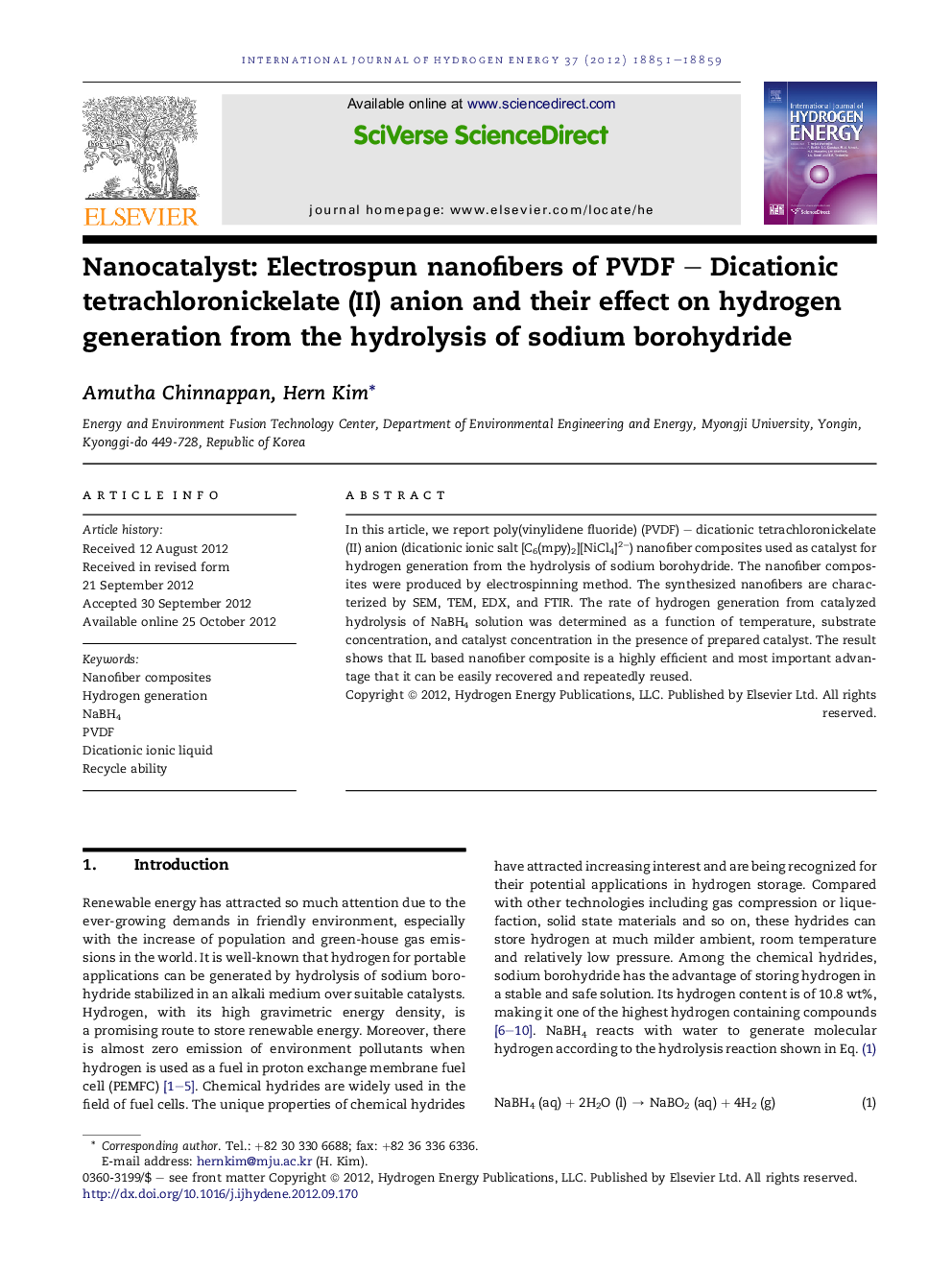| Article ID | Journal | Published Year | Pages | File Type |
|---|---|---|---|---|
| 1276089 | International Journal of Hydrogen Energy | 2012 | 9 Pages |
In this article, we report poly(vinylidene fluoride) (PVDF) – dicationic tetrachloronickelate (II) anion (dicationic ionic salt [C6(mpy)2][NiCl4]2−) nanofiber composites used as catalyst for hydrogen generation from the hydrolysis of sodium borohydride. The nanofiber composites were produced by electrospinning method. The synthesized nanofibers are characterized by SEM, TEM, EDX, and FTIR. The rate of hydrogen generation from catalyzed hydrolysis of NaBH4 solution was determined as a function of temperature, substrate concentration, and catalyst concentration in the presence of prepared catalyst. The result shows that IL based nanofiber composite is a highly efficient and most important advantage that it can be easily recovered and repeatedly reused.
Graphical abstractFigure optionsDownload full-size imageDownload as PowerPoint slideHighlights► PVDF-[C6(mpy)2][NiCl4]2− nanofiber composites produced by electrospinning method. ► The activation energy is (44.54 kJ/mol) lower than the catalyst [C6(mpy)2][NiCl4]2−. ► Environmentally benign nanofiber composites. ► PVDF-[C6(mpy)2][NiCl4]2− nanofiber composite reusable for five times. ► No deactivation under repeated condition.
